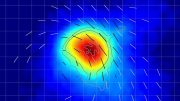
A study by researchers from the Medical Research Council and Imperial College London showed that inhibiting the protein IL-11 in mice can increase their lifespan by up to 25%. The treatment reduced aging signs and cancer rates, suggesting potential applications in human aging, with clinical trials already underway. Credit: SciTechDaily
Inhibiting IL-11 in mice extends lifespan and reduces aging signs, with potential implications for human aging treatments.
Researchers from the Medical Research Council Laboratory of Medical Science and Imperial College London have discovered that ‘switching off’ a protein called IL-11 can increase the healthy lifespan of mice by nearly 25%. Working alongside colleagues at Duke-NUS Medical School in Singapore, they tested the effects of IL-11 by creating mice that had the gene-producing IL-11 (interleukin 11) deleted, which extended the lives of the mice by over 20% on average. Additionally, they treated 75-week-old mice – equivalent to the age of about 55 years in humans – with an injection of an anti-IL-11 antibody, a drug that stops the effects of IL-11 in the body.
Promising Results with Anti-IL-11 Treatment
In their study, recently published in Nature, the researchers found that treatment with the anti-IL-11 drug from 75 weeks of age until death extended the median lifespan of male mice by 22.5% and of female mice by 25%. The treated mice lived for an average of 155 weeks, whereas the untreated mice lived for an average of 120 weeks.
The treatment largely reduced deaths from cancer in the animals, as well as reducing the many diseases caused by fibrosis, chronic inflammation, and poor metabolism, which are hallmarks of aging. There were very few side effects observed.
Video showing the knockout mice that do not produce IL-11 on the left, and normally aging mice on the right, at 90-95 weeks old. Credit: MRC Laboratory of Medical Science / Duke-NUS Medical School
“These findings are very exciting. The treated mice had fewer cancers, and were free from the usual signs of aging and frailty, but we also saw reduced muscle wasting and improvement in muscle strength. In other words, the old mice receiving anti-IL11 were healthier,” said co-corresponding author Professor Stuart Cook from the Medical Research Council Laboratory of Medical Science (MRC LMS), Imperial College London, and Duke-NUS Medical School in Singapore.
“Previously proposed life-extending drugs and treatments have either had poor side-effect profiles, or don’t work in both sexes, or could extend life, but not healthy life, however this does not appear to be the case for IL-11.”
“While these findings are only in mice, it raises the tantalizing possibility that the drugs could have a similar effect in elderly humans. Anti-IL-11 treatments are currently in human clinical trials for other conditions, potentially providing exciting opportunities to study its effects in aging humans in the future.”
Historical and Future Perspectives on IL-11 Research
The researchers have been investigating IL-11 for many years and in 2018 they were the first to show that IL-11 is a pro-fibrotic and pro-inflammatory protein, overturning years of incorrect characterization as anti-fibrotic and anti-inflammatory.
Assistant Professor Anissa Widjaja from Duke-NUS Medical School, Singapore, who was a co-corresponding author, said: “This project started back in 2017 when a collaborator of ours sent us some tissue samples for another project. Out of curiosity, I ran some experiments to check for IL-11 levels. From the readings, we could clearly see that the levels of IL-11 increased with age and that’s when we got really excited!”
“We found these rising levels contribute to negative effects in the body, such as inflammation and preventing organs from healing and regenerating after injury. Although our work was done in mice, we hope that these findings will be highly relevant to human health, given that we have seen similar effects in studies of human cells and tissues.
“This research is an important step toward better understanding aging and we have demonstrated, in mice, a therapy that could potentially extend healthy aging, by reducing frailty and the physiological manifestations of aging.”
Addressing Global Health Challenges with New Insights
Previously, scientists have posited that IL-11 is an evolutionary hangover in humans, as while it is vital for limb regeneration in some animal species, it is thought to be largely redundant in humans. However, after about the age of 55 in humans, more IL-11 is produced and past research has linked this to chronic inflammation, fibrosis in organs, disorders of metabolism, muscle wasting (sarcopaenia), frailty, and cardiac fibrosis. These conditions are many of the signs we associate with aging.
When two or more such conditions occur in an individual, it is known as multimorbidity, which encompasses a range of conditions including lung disease, cardiovascular disease, diabetes, vision and hearing decline, and a host of other conditions.
“The IL-11 gene activity increases in all tissues in the mouse with age. When it gets turned on it causes multimorbidity, which is diseases of aging and loss of function across the whole body, ranging from eyesight to hearing, from muscle to hair, and from the pump function of the heart to the kidneys,” said Cook.
Multimorbidity and frailty are acknowledged to be among the biggest global healthcare challenges of the 21st century, according to many leading health bodies, including the NHS, and WHO. Currently, no treatment for multimorbidity is available, other than to try to treat the separate multiple underlying causes individually.
The scientists caution that the results in this study were in mice and the safety and effectiveness of these treatments in humans need further establishment in clinical trials before people consider using anti-IL-11 drugs for this purpose.
Reference: “Inhibition of IL-11 signalling extends mammalian healthspan and lifespan” by Anissa A. Widjaja, Wei-Wen Lim, Sivakumar Viswanathan, Sonia Chothani, Ben Corden, Cibi Mary Dasan, Joyce Wei Ting Goh, Radiance Lim, Brijesh K. Singh, Jessie Tan, Chee Jian Pua, Sze Yun Lim, Eleonora Adami, Sebastian Schafer, Benjamin L. George, Mark Sweeney, Chen Xie, Madhulika Tripathi, Natalie A. Sims, Norbert Hübner, Enrico Petretto, Dominic J. Withers, Lena Ho, Jesus Gil, David Carling and Stuart A. Cook, 17 July 2024, Nature.
DOI: 10.1038/s41586-024-07701-9
The study was primarily funded by the National Medical Research Council (Singapore), and the Medical Research Council (UK).










Be the first to comment on "Breakthrough in Anti-Aging: IL-11 Deactivation Boosts Lifespan by 25%"